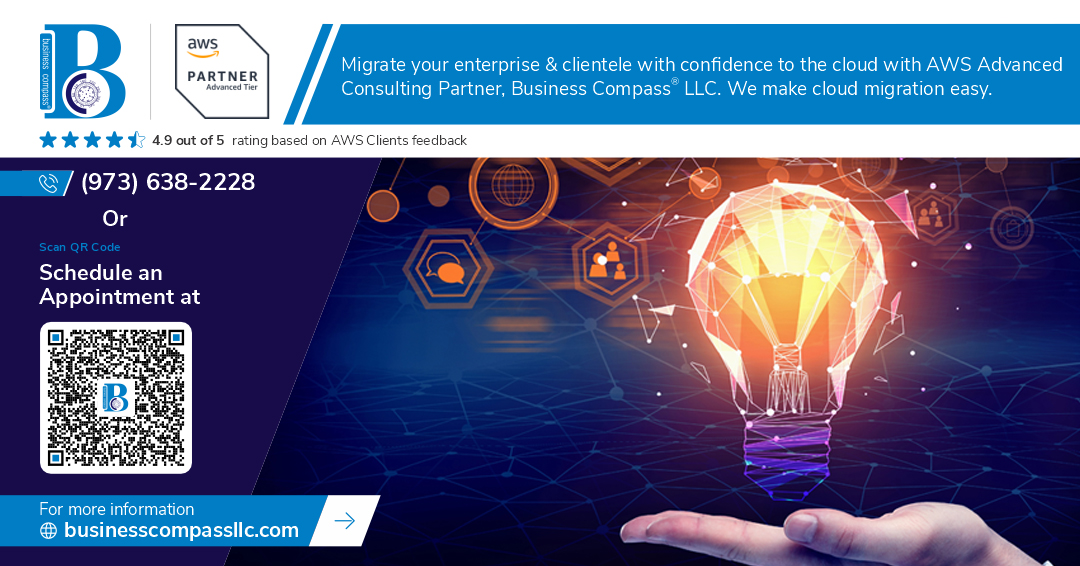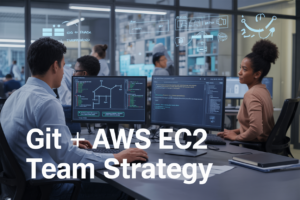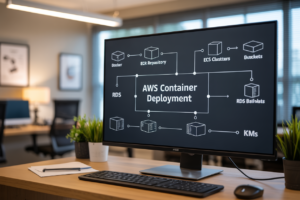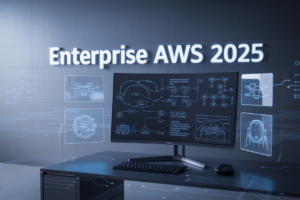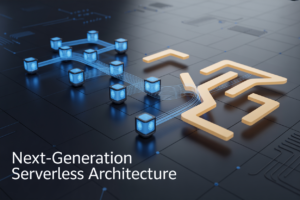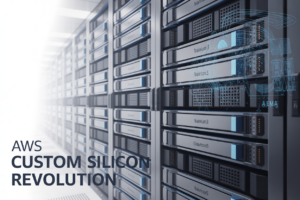🚀 The cloud computing landscape is evolving at breakneck speed, and nowhere is this more evident than in the realm of AWS compute services. As businesses race to stay ahead in the digital age, the question on everyone’s mind is: What does the future hold for EC2, Lambda, Fargate, ECS, and EKS?
Imagine a world where your infrastructure scales seamlessly, your applications run effortlessly, and your costs are optimized automatically. This isn’t a far-off dream—it’s the promise of AWS’s next-generation compute services. But with so many options and rapid advancements, how can you navigate this complex ecosystem to leverage its full potential?
In this deep dive, we’ll explore the cutting-edge developments in AWS compute, from the tried-and-true EC2 instances to the serverless revolution of Lambda and the containerized future with ECS, EKS, and Fargate. We’ll uncover emerging trends, best practices, and the exciting possibilities of hybrid and multi-cloud computing. Whether you’re a seasoned AWS architect or just starting your cloud journey, buckle up—the future of compute is here, and it’s more thrilling than ever. 💻☁️
Overview of AWS Compute Services
Evolution of cloud computing in AWS
AWS has revolutionized cloud computing since its inception in 2006. The journey began with EC2 (Elastic Compute Cloud), offering virtual servers in the cloud. As technology advanced, AWS introduced more specialized services to cater to diverse computing needs:
- 2006: EC2 launched
- 2014: Lambda introduced, pioneering serverless computing
- 2015: ECS (Elastic Container Service) released
- 2017: EKS (Elastic Kubernetes Service) and Fargate unveiled
This evolution reflects the shift from traditional infrastructure to more flexible, scalable, and cost-effective solutions.
Key differences between EC2, Lambda, Fargate, ECS, and EKS
| Service | Type | Use Case | Management Overhead |
|---|---|---|---|
| EC2 | Virtual Servers | General-purpose computing | High |
| Lambda | Serverless Functions | Event-driven, short-lived tasks | Low |
| ECS | Container Orchestration | Microservices, long-running tasks | Medium |
| EKS | Managed Kubernetes | Complex container orchestration | Medium-High |
| Fargate | Serverless Containers | Container workloads without infrastructure management | Low |
Choosing the right compute service for your needs
Selecting the appropriate AWS compute service depends on several factors:
- Workload characteristics
- Scalability requirements
- Operational expertise
- Cost considerations
- Application architecture
For instance:
- Use EC2 for traditional applications requiring full control over the infrastructure
- Opt for Lambda for event-driven, stateless functions
- Choose ECS or EKS for containerized applications based on complexity
- Select Fargate for container workloads without infrastructure management
Consider your specific use case, team skills, and long-term goals when making this decision. As we delve deeper into each service, you’ll gain a better understanding of their strengths and ideal use cases.
EC2: The Backbone of AWS Compute
Latest EC2 instance types and their use cases
Amazon EC2 continues to evolve, offering a diverse range of instance types tailored to specific workloads. Here’s a breakdown of the latest EC2 instance types and their ideal use cases:
| Instance Type | Use Case |
|---|---|
| C6g (Graviton2) | High-performance computing, scientific modeling |
| M6g (Graviton2) | General-purpose workloads, application servers |
| R6g (Graviton2) | Memory-intensive applications, in-memory databases |
| T4g (Graviton2) | Burstable performance, web servers, development environments |
| X2gd (Graviton2) | Memory-optimized for large-scale, enterprise-class applications |
EC2 Auto Scaling advancements
EC2 Auto Scaling has seen significant improvements, enhancing its ability to manage application availability and costs:
- Predictive scaling: Uses machine learning to forecast traffic and automatically scale ahead of time
- Scheduled scaling: Allows for planned scaling based on known traffic patterns
- Target tracking scaling: Maintains a specific metric at a target value
EC2 cost optimization strategies
Optimizing EC2 costs is crucial for efficient cloud operations. Consider these strategies:
- Right-sizing instances
- Leveraging Spot Instances for non-critical workloads
- Implementing automated start/stop schedules
- Utilizing Savings Plans for long-term commitments
Integration with other AWS services
EC2 seamlessly integrates with various AWS services, enhancing its capabilities and extending its use cases. Key integrations include:
- Amazon EBS for persistent storage
- Amazon VPC for networking isolation
- AWS Systems Manager for instance management
- Amazon CloudWatch for monitoring and alerting
These integrations allow for more complex and robust architectures, enabling EC2 to serve as a foundational component in diverse cloud solutions.
Serverless Revolution with Lambda
Benefits of event-driven architecture
Event-driven architecture (EDA) has revolutionized the way we design and build applications, especially in serverless environments like AWS Lambda. Here are some key benefits:
- Scalability and flexibility
- Decoupling of services
- Real-time responsiveness
- Cost-efficiency
| Benefit | Description |
|---|---|
| Scalability | EDA allows systems to automatically scale based on event volume |
| Flexibility | Services can be easily added, modified, or removed without affecting others |
| Decoupling | Components communicate through events, reducing dependencies |
| Real-time | Events trigger immediate responses, enabling real-time processing |
| Cost-efficiency | Resources are utilized only when events occur, optimizing costs |
Lambda’s role in microservices
Lambda plays a crucial role in building and deploying microservices:
- Serverless execution: Lambda functions run without provisioning or managing servers
- Easy integration: Seamlessly connects with other AWS services and external APIs
- Rapid deployment: Quick updates and rollbacks for individual microservices
- Independent scaling: Each function scales independently based on demand
New features and improvements in Lambda
AWS continues to enhance Lambda with new features:
- Container image support
- Increased memory and CPU allocation
- Improved networking capabilities
- Enhanced monitoring and observability
Scaling and performance considerations
When leveraging Lambda for serverless applications, consider:
- Cold start times: Optimize function startup for improved performance
- Concurrency limits: Manage concurrent executions to prevent throttling
- Memory allocation: Balance memory and CPU resources for cost-effective scaling
- Timeout settings: Configure appropriate timeouts to handle long-running tasks
Now that we’ve explored the serverless revolution with Lambda, let’s dive into container orchestration with ECS and EKS to understand how these services complement serverless architectures.
Container Orchestration with ECS and EKS
ECS vs. EKS: Choosing the right container management service
When it comes to container orchestration in AWS, two primary services stand out: Amazon Elastic Container Service (ECS) and Amazon Elastic Kubernetes Service (EKS). Choosing between them depends on your specific needs and expertise.
| Feature | ECS | EKS |
|---|---|---|
| Ease of use | Simpler, AWS-native | More complex, industry-standard |
| Flexibility | Limited to AWS | Multi-cloud compatible |
| Ecosystem | AWS-focused | Extensive third-party tools |
| Scaling | Automatic | Manual or with add-ons |
| Cost | Generally lower | Higher due to management overhead |
Latest features in ECS
Amazon ECS continues to evolve, offering new capabilities to enhance container management:
- ECS Anywhere: Run ECS tasks on-premises
- Capacity Providers: Automate cluster scaling
- App Mesh integration: Improved service discovery and traffic management
- Fargate Spot: Cost-effective option for fault-tolerant applications
Kubernetes innovations in EKS
EKS keeps pace with the rapidly evolving Kubernetes ecosystem:
- EKS Distro: Run consistent Kubernetes clusters anywhere
- Managed node groups: Simplify worker node provisioning and lifecycle management
- Fargate profiles: Run Kubernetes pods without managing EC2 instances
- EKS Connector: Extend EKS to on-premises and other cloud environments
Container security and compliance
Securing containerized applications is crucial in both ECS and EKS:
- Network policies: Control traffic flow between pods
- IAM roles for tasks/pods: Fine-grained access control
- Secrets management: Securely store and access sensitive information
- Image scanning: Detect vulnerabilities in container images
As container adoption grows, AWS continues to innovate in both ECS and EKS, providing robust solutions for diverse containerization needs. Next, we’ll explore how Fargate is revolutionizing serverless container deployments.
Fargate: Serverless Containers
Advantages of Fargate over traditional container management
AWS Fargate offers several key advantages over traditional container management approaches:
-
Simplified Operations:
- No need to manage underlying infrastructure
- Automatic scaling and resource allocation
- Reduced operational overhead
-
Enhanced Security:
- Isolated runtime environment for each task
- Improved isolation between containers
-
Cost Efficiency:
- Pay only for resources used by containers
- No need to provision or manage EC2 instances
| Feature | Fargate | Traditional Container Management |
|---|---|---|
| Infrastructure Management | Fully managed | Manual |
| Scaling | Automatic | Manual or semi-automatic |
| Security | Task-level isolation | Shared host environment |
| Pricing | Per-second billing | Instance-based pricing |
Use cases for Fargate
Fargate is particularly well-suited for the following scenarios:
- Microservices architectures
- Batch processing and scheduled tasks
- Application modernization and refactoring
- CI/CD pipelines and testing environments
- Event-driven workloads
Cost considerations and optimization
To optimize costs when using Fargate:
- Right-size task definitions
- Implement auto-scaling
- Use Spot capacity when possible
- Leverage Compute Savings Plans
- Monitor and analyze usage patterns
By carefully considering these factors, organizations can maximize the benefits of Fargate’s serverless container approach while maintaining cost-effectiveness. Next, we’ll explore the future of hybrid and multi-cloud computing in AWS.
The Future of Hybrid and Multi-Cloud Computing
AWS Outposts and Local Zones
AWS Outposts and Local Zones are game-changers in the hybrid cloud landscape. These services bring AWS infrastructure and services closer to customers, enabling low-latency applications and data residency requirements.
| Feature | AWS Outposts | Local Zones |
|---|---|---|
| Location | On-premises | Edge locations |
| Form Factor | Physical rack | AWS-managed facility |
| Latency | Ultra-low | Very low |
| Use Cases | Data-intensive workloads | Media & entertainment, gaming |
Edge computing with AWS
Edge computing is revolutionizing how we process and analyze data. AWS offers several edge computing solutions:
- AWS IoT Greengrass
- AWS Snowball Edge
- Amazon EC2 instances at the edge
These services enable real-time processing, reducing latency and bandwidth usage while improving overall performance for edge-based applications.
Integration with on-premises infrastructure
Seamless integration between AWS and on-premises infrastructure is crucial for hybrid cloud success. AWS provides various tools and services to facilitate this integration:
- AWS Direct Connect: Dedicated network connection
- AWS Storage Gateway: Hybrid storage service
- AWS DataSync: Data transfer service
These solutions enable organizations to leverage existing on-premises investments while taking advantage of AWS’s scalability and innovation. As hybrid and multi-cloud strategies continue to evolve, AWS’s comprehensive suite of services positions it as a leader in this space, offering flexibility and performance for diverse enterprise needs.
Emerging Trends in AWS Compute
Quantum computing initiatives
As AWS continues to push the boundaries of cloud computing, quantum computing stands out as a revolutionary technology on the horizon. Amazon Braket, AWS’s quantum computing service, is at the forefront of this initiative, offering developers and researchers access to quantum hardware and simulators.
| Feature | Description |
|---|---|
| Quantum Hardware | Access to real quantum devices from providers like D-Wave, IonQ, and Rigetti |
| Quantum Circuits | Design and test quantum algorithms using a quantum circuit interface |
| Hybrid Algorithms | Combine classical and quantum computing for optimized problem-solving |
AWS is investing heavily in quantum research, aiming to solve complex problems in fields like cryptography, drug discovery, and financial modeling.
AI and machine learning optimized instances
AWS is continuously evolving its compute offerings to meet the growing demands of AI and machine learning workloads. The introduction of specialized instances like Amazon EC2 P4d and Amazon EC2 Inf1 showcases this commitment.
- P4d instances: Designed for distributed machine learning and high-performance computing
- Inf1 instances: Optimized for machine learning inference workloads
- Amazon SageMaker: Integrated platform for building, training, and deploying ML models
These optimized instances are reshaping how businesses approach AI and ML, enabling faster training times and more cost-effective inference at scale.
Green computing and sustainability efforts
AWS is taking significant strides towards sustainable cloud computing, aligning with global efforts to combat climate change. The company’s commitment to powering its operations with 100% renewable energy by 2025 is a testament to this focus.
- Energy-efficient data centers utilizing advanced cooling technologies
- Investment in renewable energy projects, including solar and wind farms
- Carbon footprint reduction through optimized instance utilization and resource management
As sustainability becomes increasingly crucial, AWS’s green computing initiatives are setting new standards for the industry, demonstrating that high-performance computing and environmental responsibility can go hand in hand.
Best Practices for AWS Compute Services
Performance optimization techniques
When it comes to optimizing performance in AWS compute services, several key strategies can significantly enhance your application’s efficiency:
- Right-sizing instances
- Leveraging auto-scaling
- Utilizing caching mechanisms
- Implementing load balancing
Here’s a comparison of these techniques:
| Technique | Benefits | Considerations |
|---|---|---|
| Right-sizing | Cost-effective, improved resource utilization | Requires regular monitoring and adjustments |
| Auto-scaling | Handles traffic spikes, optimizes costs | Need to set appropriate scaling policies |
| Caching | Reduces latency, improves response times | Must manage cache invalidation |
| Load balancing | Distributes traffic evenly, increases availability | Additional configuration and management required |
Cost management strategies
Effective cost management is crucial for optimizing your AWS compute expenses. Consider implementing these strategies:
- Use AWS Cost Explorer to analyze spending patterns
- Leverage Reserved Instances for predictable workloads
- Implement automated instance scheduling for non-production environments
- Utilize Spot Instances for fault-tolerant, flexible workloads
Security and compliance considerations
Ensuring security and compliance in AWS compute services is paramount. Key practices include:
- Implementing least privilege access
- Encrypting data at rest and in transit
- Regularly patching and updating systems
- Utilizing AWS security services like GuardDuty and Security Hub
Monitoring and observability
Effective monitoring and observability are essential for maintaining optimal performance and identifying issues proactively. Implement these best practices:
- Use Amazon CloudWatch for comprehensive monitoring
- Set up custom metrics and alarms for critical resources
- Implement distributed tracing with AWS X-Ray
- Leverage centralized logging with Amazon CloudWatch Logs
By implementing these best practices across performance, cost, security, and monitoring, you can ensure your AWS compute services are optimized, secure, and cost-effective. As we move forward, it’s crucial to stay updated with emerging trends in AWS compute to leverage new capabilities and further enhance your cloud infrastructure.
AWS continues to innovate and expand its compute services, offering a diverse range of options to meet the evolving needs of businesses and developers. From the traditional EC2 instances to serverless solutions like Lambda and Fargate, and container orchestration platforms like ECS and EKS, AWS provides a comprehensive suite of tools for modern application development and deployment.
As we look to the future, hybrid and multi-cloud computing will play an increasingly important role, with AWS adapting its services to seamlessly integrate across different environments. By staying informed about emerging trends and following best practices, organizations can leverage AWS compute services to build scalable, efficient, and cost-effective solutions that drive their digital transformation journey forward.










